Effective Weed Control for Canola in Western Canada
Weed control is a critical aspect of successful canola production in Western Canada. Weeds compete with canola for resources, impacting yields and overall crop health. Effective weed management involves a combination of farming practices, herbicide applications, and an integrated approach tailored to the specific weeds being targeted. Regular scouting, rotation of herbicide modes of action, and promoting a healthy crop canopy are essential for keeping these common canola weeds in check and ensuring optimal yields.
This blog covers:
- Top Canola Weeds in Western Canada
- Implementing the Right Weed Control Strategies
- Choosing the Right Herbicides for Effective Canola Weed Control
Top Canola Weeds in Western Canada
Canola farming in Western Canada comes with its share of difficult weeds. Managing these top canola weeds requires a comprehensive approach that combines agronomic practices, targeted herbicides, and timely interventions. Regular field scouting and staying informed about the latest weed management strategies will help you keep these culprits in check and ensure the health and productivity of your canola crops.
Here are some of the most difficult canola weeds to control that can impact your crops, along with strategies for effective management:

Cleavers
Also known as bedstraw, cleavers can entangle canola plants and hinder their growth. Recognizable by their clinging hooked hairs, this weed is best managed by using a post-harvest herbicide application, competitive canola varieties, and proper in-crop herbicide application.
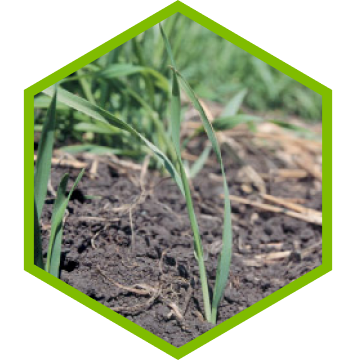
Wild Oats
Wild oats are known for their aggressive nature which when left unchecked will reduce canola yields. Weed resistance has made it one of the more difficult weeds to control; this makes canola a good cropping option with its different herbicide systems.
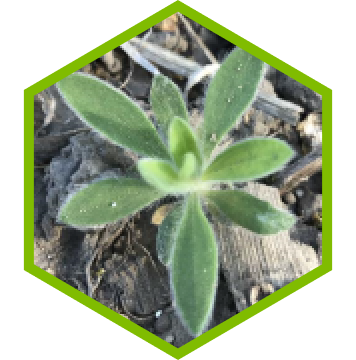
Kochia
It has prolific seed production (up to 25,000 seeds per plant) and it is a tumbleweed which easily distributes the seeds across a large area and into neighboring fields. Liberty link canola is thought to be one of the best systems to help manage this weed while managing the risk of resistance.
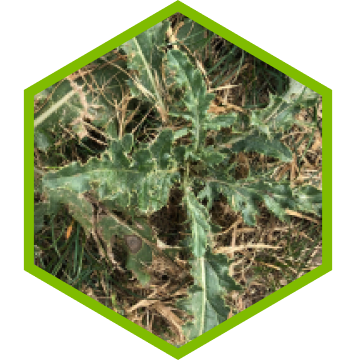
Canada Thistle
Weed control of Canada thistle in canola can be difficult. Pre-or post-harvest applications the previous year are very important when this weed is a concern. The use of the Clobber® herbicide in Roundup Ready® or Clearfield® canola can be a useful tool in the spring.
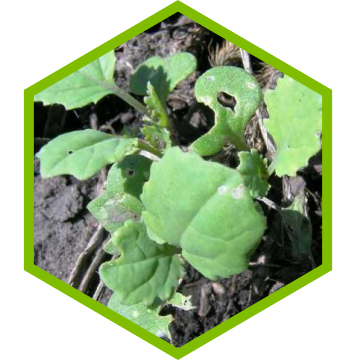
Volunteer Canola
Volunteer canola is one of the most difficult weeds to control within a canola crop. Its presence can lead to an increased risk of disease to the canola crop. A pre-seed application can be a great tool for volunteer canola weed control.

Shepherd’s-Purse
This winter annual is a small broadleaf weed with heart-shaped seed pods. It can compete with canola for nutrients and space. Implement timely herbicide applications and crop rotation to control shepherd’s-purse.

Wild buckwheat
Wild buckwheat is a tough to control weed especially once it grows beyond the 3rd leaf stage. Two passes are often needed for control as it is well known for its multiple flushes.
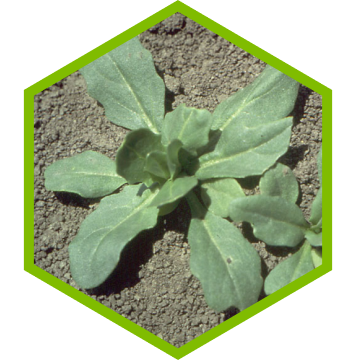
Stinkweed
A difficult to control weed in canola stinkweed is know for its ability to lie dormant in the soil for up to 20 years. Because of its ability to over-winter fall herbicide applications are recommended.
The Right Weed Control Strategies
Once the problem weeds have been identified, proper weed control strategies is key. Various weed species can compete with canola crops for nutrients, water, and sunlight, ultimately affecting yields. Let’s explore some of the weed control strategies:
- Crop Rotation: Diverse crop rotations will help prevent the buildup of specific weed populations.
- Early Seeding: Planting canola early to establish a strong canopy can be advantageous however soil temperatures and potential for frost damage must be taken into account. Early establishment often creates a dense crop canopy shading out emerging weeds, reducing their competitiveness. Early seeding also gives Canola a head-start in utilizing fertility resources.
- Herbicide Application: Use pre-emergent and post-emergent herbicides to target weeds at different growth stages. Pre-emergent herbicides are a great option for early weed removal. These herbicides create a barrier in the soil that prevents weed germination. Post-emergent herbicides target actively growing weeds after canola emergence.
- Herbicide Rotation and Mixtures: Rotate herbicides with different modes of action to prevent weed resistance. Herbicide mixtures that combine multiple modes of action increase the efficacy of weed control and reduce the risk of resistance development.
- Proper Seeding Rate: Plant canola at the recommended seeding rate to achieve a dense stand. This helps in achieving quick canopy closure, minimizing weed growth between rows and reducing competition for resources.
- Weed Scouting: Regularly scout fields to identify weed species and their density. Early detection allows for targeted intervention and prevents weeds from establishing a strong foothold.
- Volunteer Canola Management: Remove volunteer canola plants before planting a new canola crop. Volunteer canola can harbor diseases and pests that affect the current crop.
- Integrated Weed Management: Combine multiple weed control strategies to create a holistic approach. This may involve a combination of cultural practices, herbicide applications, and preventive measures.
- Stay Informed: Being aware of new canola weed control options allows for informed decisions and will help increase yields and ensure the success of your canola crops.
Choosing the Right Herbicides for Canola Weed Control
Selecting the right herbicides plays a pivotal role in maintaining weed-free fields and maximizing yields. Below are some essential considerations for choosing herbicides that align with the specific needs of canola crops.
Weed Spectrum
Broadleaf Weeds: Canola crops face competition from various broadleaf weeds like wild mustard, cleavers, and lamb’s-quarters. Select herbicides which target the weeds present while minimizing the impact on the canola crop.
Grass Weeds: Grass weeds like wild oats and green foxtail can also pose challenges. Select registered herbicides that effectively control grassy weeds without harming the crop.
Herbicide Resistance Management
Rotation of Modes of Action and tank mixing: Rotating herbicides and mixing different herbicide groups are pro-active ways to prevent the development of herbicide-resistant weeds. This strategy helps maintain the effectiveness of herbicides over the long term.
ALSO READ OUR BLOG ON: Understanding Herbicide Resistance
Adjuvants and Application
Use of Adjuvants: Adjuvants enhance the performance of herbicides by improving their coverage and uptake by target weeds. Choose adjuvants that are compatible with canola and the chosen herbicide.
Application Techniques: Consider factors like spray volume, droplet size, and nozzle selection for optimal herbicide application. Proper application ensures even coverage and maximum weed control.
In conclusion, effective weed control is essential for successful canola production. By understanding the weed spectrum, growth stages, and resistance management strategies, informed decisions can be made when selecting herbicides. The key to sustainable weed management lies in integrated approaches that combine herbicides with cultural practices, crop rotation, and other agronomic techniques.
Consulting with agronomic experts and staying updated on the latest research and recommendations will help tailor a herbicide program to your specific field conditions. With a well-planned herbicide strategy, you can foster healthy canola crops and optimize yields while promoting environmental stewardship on your farm.
Tailored In-Crop Herbicides from AgraCity
AgraCity has the largest portfolio of herbicides in Canada, developed with our extensive knowledge of Canadian agriculture while providing affordable high-performance solutions from many different herbicide groups.
Our products ensure advanced agricultural solutions. AgraCity is not an affiliated manufacturer, and therefore we can create new solutions with different active ingredients from around the world.
Check out our In-Crop Herbicide Portfolio
Disclaimer: This blog provides general information and recommendations. It’s essential to consult experts for site-specific recommendations.








